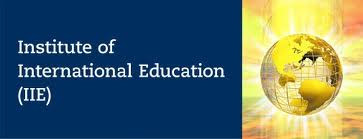The Institute of International Education’s delegation to Myanmar this month had an unusual start. Dr Catherine Raymond, a faculty member at Northern Illinois University who curates the Burmese art collection there, was a part of our group and had taken on the mission to give back to Myanmar a Buddha sculpture created more than 1,000 years ago.
At a ceremony with the minister of culture, we learned that the return of the Buddha was not an easy thing.
The university had wanted to give it back some 10 years ago, when it realised that the sculpture had been stolen from the pagoda at Pagan. But there were practically no relations between the US and Myanmar. UPS would not take charge of such a rare artifact, and there were no funds available to defray the cost of transport.
But professors who love their field have a way of prevailing.
Dr Raymond’s university has the only centre for Burma studies in the US, and it has been operating since the 1980s. She is one of a handful of scholars who studied Burma during all the difficult years and is now part of opening its educational space. Sometimes, it seems, a career in international education involves as much diplomacy as it does research.
Our delegation was a part of IIE’s International Academic Partnerships Program, and the 10 US campuses that took part were eager to explore potential partnership opportunities. This is also part of a broader IIE Myanmar higher education initiative that seeks to help the country rebuild its higher education capacity.
It was the largest delegation of US universities to travel to Myanmar, and we were accompanied by representatives of the US Embassy and the US Department of State’s Bureau of Educational and Cultural Affairs.
We visited nine universities throughout Myanmar and engaged in in-depth discussions with several government ministries, including the Ministry of Education, Ministry of Science and Technology and Ministry of Health.
As the first step to building deeper academic engagement between our two countries, the delegation members gave extremely well-received lectures and workshops for more than 1,000 faculty and students. We covered such topics as finding and making strategic partnerships, faculty development and accreditation processes and procedures.
This is a critical juncture for engaging with Myanmar.
Some investors predict that the country’s gross domestic product will double in the next five years. It shows signs of opening up to business and investment, and a number of multinational companies are poised to enter the market.
This is a real opportunity, and IIE is ready to work with corporations and investors who are interested in developing talent to support this growth.
Myanmar clearly needs a higher education system that can produce students capable of critical thinking and innovation, as well as an investment in infrastructure – internet, libraries, teaching and laboratory facilities – and the kind of applied research that will benefit students and industry alike.
Transition
The role of higher education cannot be underestimated.
Higher education, NGOs, funding agencies and the private sector all have responsibilities in helping countries in transition with reform and development. We need close coordination of resources and efforts, so we don't have numerous organisations vying to fund or accomplish the same things.
Even better would be coordination of efforts on a multinational level, and higher education is uniquely positioned to achieve this. And it is vitally important to listen to leaders in Myanmar about what is important to them.
In a few weeks, IIE will issue a report based on the visits that will include observations on the context of higher education in Myanmar, an analysis of needs facing the sector, and recommendations to support partnerships and academic exchanges.
Some initial indications regarding areas of need include: English language training for teachers; sharing of best practice; building capacity for university administrators to develop international programmes and partnerships; training and curriculum development in the areas of law, international relations and public administration; and skills development in areas such as research proposals and collaboration, quality assurance and teaching methodologies.
As IIE has done through initiatives such as the WISE Program for Education Leadership and a series of training workshops and conferences in Iraq, we look forward to working with funders to develop innovative and responsive programmes.
There are some very positive indications already.
As immediate follow-up to our productive visit, members of the delegation to Myanmar have announced concrete university-led initiatives that will benefit citizens, students and faculty from both countries.
Fulbright exchanges between our two countries have resumed, and Deputy Assistant Secretary Meghann Curtis announced that the State Department will once again welcome and encourage university faculty, administrators and government employees throughout the country to apply for the Fulbright scholarship programme to complete a masters degree in the US.
And a number of US scholars who have remained engaged with Myanmar over the years, including several members of our delegation, are renewing their connections.
What made the ceremony for the Buddha’s return particularly poignant was the surprise the Myanmar officials had arranged. That morning officials had flown in the bottom part of the sculpture. For the first time since it had cracked apart in an earthquake in the 1970s, the Buddha was on its way to becoming whole.
It was a very good omen for a visit aimed at reconnecting institutions and people whose diplomatic relations date back to 1857, when the Burmese King Mindon reached out to President James Buchanan in order to promote commercial relations for the benefit of his nation's many poor.
So many officials and academics with whom we met called our visit historic. We also now hope to make history by what we can do next in the cause of expanding and improving relations between our people and countries.





0 Comments